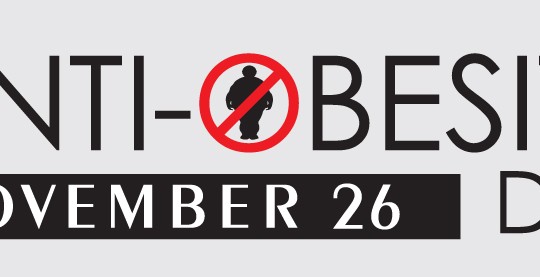
Anti-Obesity Day

Anti-Obesity Day is an international observance held on November 26. The event aims to raise awareness of obesity as a public health hazard.
Obesity is a medical condition in which excess body fat has accumulated to such an extent that it may cause serious health problems. Obesity reduces life expectancy and increases the likelihood of heart disease, diabetes, osteoarthritis, and other diseases.
- More than one-third (34.9% or 78.6 million) of U.S. adults are obese.
- Approximately 17% (or 12.7 million) of children and adolescents aged 2—19 years are obese
When it comes to weight loss, there’s no lack of fad diets promising fast results. But such diets limit your nutritional intake, can be unhealthy, and tend to fail in the long run.
How do you know that you are overweight or obese?
Over weight is defined as “a BMI greater than or equal to 25” & Obesity as “a BMI greater than and equal to 30”. BMI is body mass index, an index commonly used for classification of obesity. WHO defines it “as a person’s weight in kilograms divided by the square of his height in meters (kg/m2)”.
How to calculate your ideal body weight:
| Build | Women | Men |
| Medium | 100lbs (45.5kg) for the first 5 feet (152cm) height, plus 5lb (2.3kg) for each additional inch | 106lbs (48kg) for the first 5 feet (152cm) of height, plus 6þlbs (2.7kg) for each additional inch |
| Small | Subtract 10% | Subtract 10% |
| Large | Add 10% | Add 10% |
Learn more:
- Healthy Weight information from CDC: http://www.cdc.gov/healthyweight/index.html
- Weight-loss and Nutrition Myths: How Much Do you Really Know? – http://www.niddk.nih.gov/health-information/health-topics/weight-control/myths/Documents/Myths.pdf


Most Commented